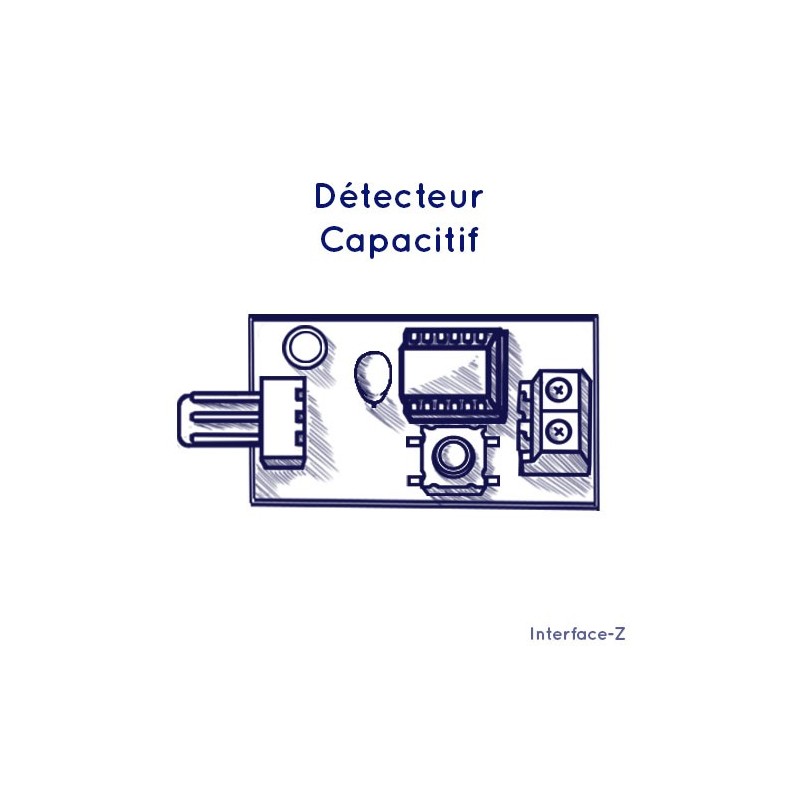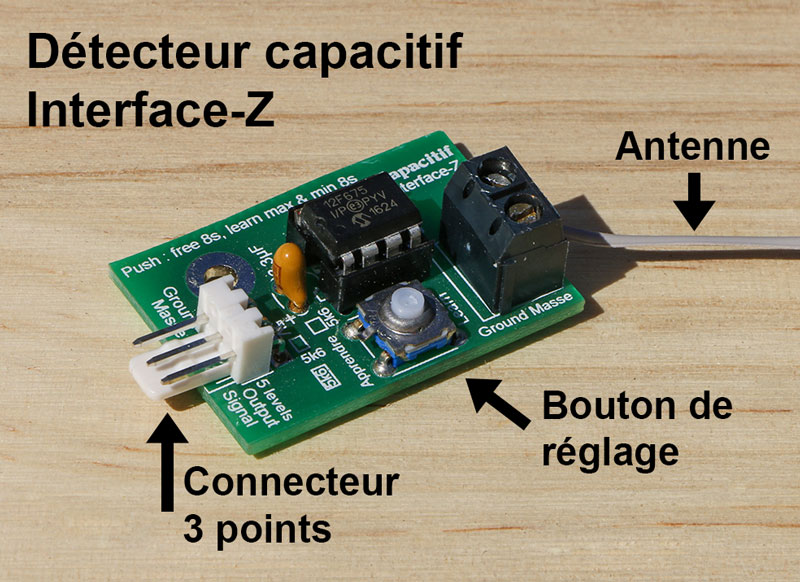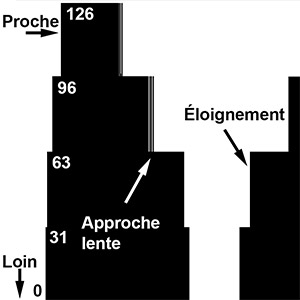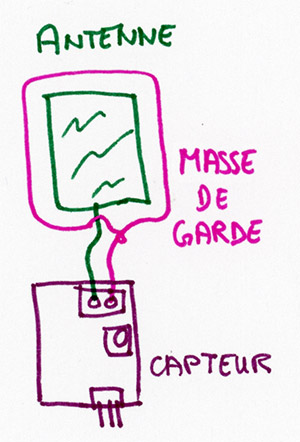










The capacitive sensor is linked to an antenna. This antenna can be visible or invisible, and can be a wire, an object or a surface made of a conductive material. The antenna can be inserted inside an object or behind a surface. The sensor can turn almost any object into a sensor.
The nature of the antenna is extremely variable, and there are many detection options. The antenna can be :
The sensor reacts to variations happening in the environment around its antenna : an approaching hand for example. In the right conditions, the sensor can detect the hand almost 30 cm away from the antenna. The detection range depends a lot on the sensor's calibration (read further on) and can limit the sensor to a shorter range all the way to direct contact.

Optionally, the calibration button can be separated from the card on the edge of a wire, or more directly integrated upon the sensor. The default wire-length for the button is 50cm but this can be longer.
This sensor doesn't use a store-bought sensitive module, and thus doesn't have any of their drawbacks (such as sensitivity to interferences or recalibrating when detection lasts a few seconds). For now and to our knowledge, our sensor's functions are unique for a capacitive sensor.
Comparing detection on stretched wires – spiderwebs by Interface-z
Our new capacitive sensor model offers many unique advantages for this kind of detection :
Adjustable detection range : the calibration button lets one adjust the minimum and maximum distance for detection. This can be set by a simple gesture.
Reliability of the sensor regarding interferences : our version of the sensor let's us clear out interferences either by adding a ground wire, or by recalibrating with the button.
The capacitive sensors commercially available are often prone to interferences from the general electrical circuit, which is hard to intervene on when it comes from unmovable devices such as the electrical installation within a place itself, or from LED lighting and switched-mode power supplies.
Multiple detection thresholds : our sensor is more than a bang bang controller (All or nothing), it can give 5 different response levels depending on the distance of the detected object. If nothing approaches the antenna, its rest value is 0, after which there are 4 levels of proximity. The data can also be used in bang-bang control, by using the first detection level only.
Reactive response : our sensor reacts much faster than regular capacitive sensors. It makes 32 detections per second, which is a human's movement speed limit. It is compatible with musical gesture.
Stable data return : once the sensor is calibrated, the detected distance levels are stable.
No readjustment over time : when a detectable object such as a hand remains close to the antenna, it keeps detecting it. It doesn't adapt itself over time to its environment, and doesn't recalibrate itself like most capacitive sensors.

Caracteristics :
If the antenna is accidentally moved, or if something gets on it (jacket, leaf, drops of water), the sensor re-calibrates itself.
For all sensor versions, in the event of interference between several antennas, a guard ground can be connected to the second channel of the antenna domino to stabilize detection.
Can be equipped with a capacitive sensor (non comprehensive list) :
A stroke, touch or approach of these objects by a visitor can then provoke a sound, light, mecanical or visual event...
- 3 pin connector : output of the sensor, to be plugged to an analog input of our analog aquisition interface boards. The pin order : ground / 5 V / data. Please check the pin order if the sensor shall be connected to non Interface-Z card.
- 2 way domino header for the antenna :

If the antenna is covered, the material must not be too thick between the antenna and the element it must detect, no more than a few centimeters depending on the type of material.
- Compatible materials for the antenna (non comprehensive list) :
You might also like